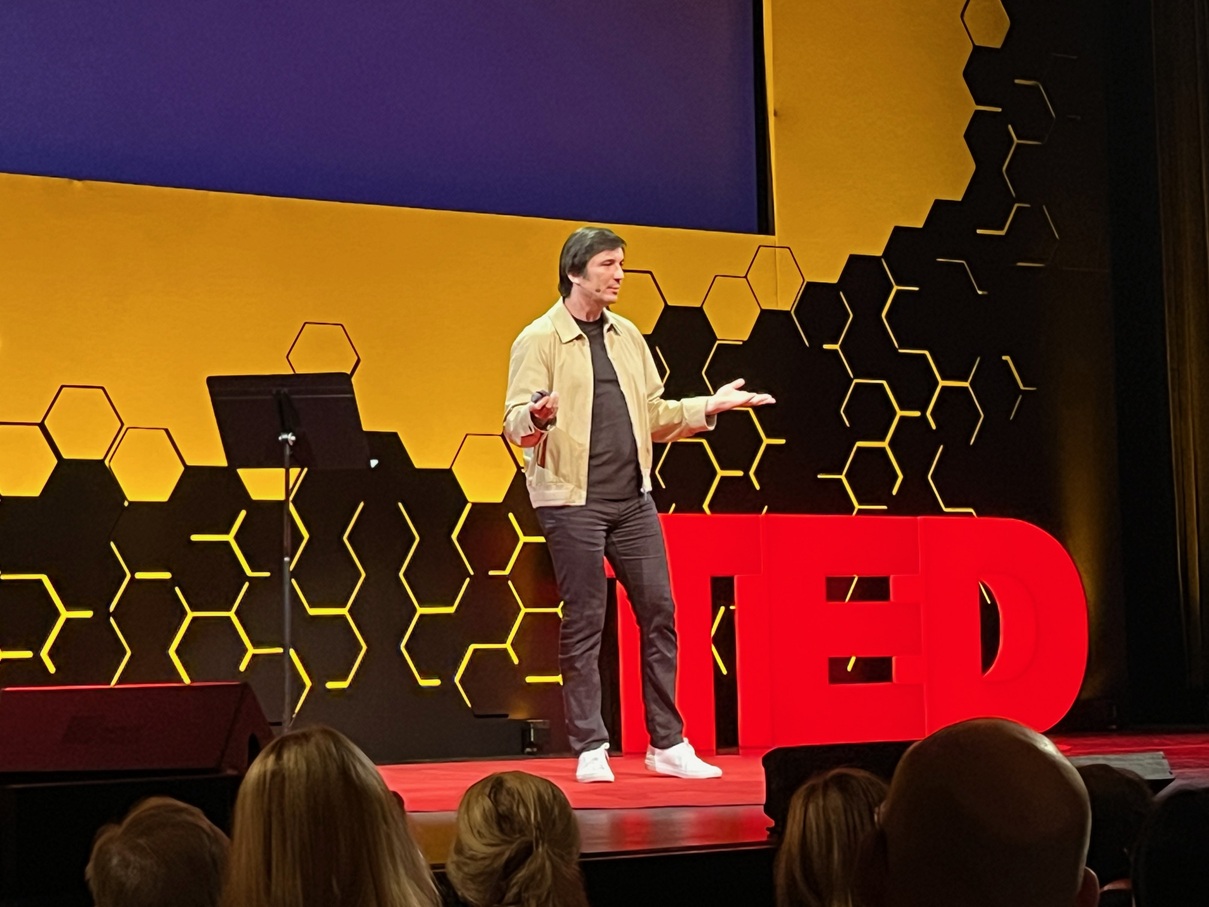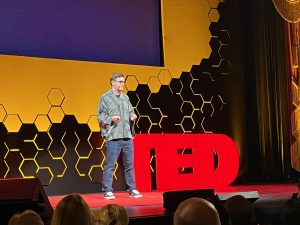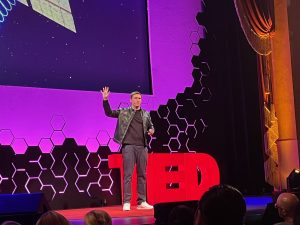 AI
AI
 AI
AI
 AI
AI
The opening of the TED AI conference in San Francisco this week featured a video composed by a single actor, wearing different costumes and adopting varying points of view about AI. Depending on the persona adopted by the actor, AI was either transformative, evil, helpful, addictive, climate-damaging, the future — or the end of the world as we know it.
The video’s message is clear: Everyone is talking about AI these days and the challenge is to separate the signal from the noise. And there is a lot of noise, particularly around jobs.
“What do we do in a world where the vast majority of today’s jobs are gone?” Vlad Tenev (pictured), co-founder and chief executive of Robinhood Markets Inc., asked during an appearance at the conference. “We don’t yet know AI’s limits. Maybe it’s not the job disruption itself that makes us nervous, but the speed at which it’s happening. We really don’t know if we’re building a super assistant or an apex predator.”
Tenev answered his own question about the future of jobs by painting a more optimistic picture of a world where AI actually generates a significant number of new opportunities in the global economy. As he noted, the rise of the internet fostered entirely new online industries, as seen by the birth of companies such as Google LLC. AI has the same potential, offering the prospect that agentic capabilities will lead to highly successful businesses run by a sole entrepreneur, according to Tenev.
“There’s going to be a flurry of new entrepreneurial activity,” Tenev said. “There will be single-person unicorns which, by the way, I don’t think we’re very far away from.”
In the meantime, companies embracing AI and agentic technology are seeing productivity gains, something that May Habib, co-founder and CEO of Writer Inc., said has caused “a generational transfer of power happening right now.” Habib noted that her company, a generative AI platform for the enterprise, has deployed agents solving $100 million problems.
“The new playbook is about a partnership between humans and AI together,” Habib told the TED AI audience. “The first rungs on a career ladder are going away. I know because my company is automating a lot of them.”
In addition to AI’s potential impact on employment, several notable voices in the scientific community are raising alarm bells about the technology’s focus and direction.
GPT stands for Generative Pretrained Transformer, and one of the key figures who led the early development of transformers is Llion Jones, currently the co-founder and chief technology officer at Sakana AI. Jones was part of a core team at Google that published a seminal paper in 2017 outlining how neural network architectures could excel at sequence-to-sequence tasks and process language contextually.

Llion Jones, co-founder of Sakana AI, spoke about his early work on transformers for AI.
Along with getting his new company off the ground, what is keeping Jones up at night is a belief that the AI community is moving away from the groundbreaking research that led to the transformative impact of GPT. He described how enormous sums of money being paid to attract AI developers, coupled with pressure for results, is making it harder for advances in the field.
“At no point when we were working on this project [were] we worried about being scooped,” Jones recalled. “That’s the kind of research we should be doing. Do you feel when [engineers] start a new position, they will try their mad ideas… or do you think they will feel pressured to prove their worth? Given the wealth and talent we have now, we can afford to do a lot more.”
Another leading researcher expressed concern that the AI industry has morphed into a singular focus on autonomy, rather than being human-centered. Eric Zelikman was one of the developers behind the Grok system for xAI and has founded a new company called Humans&. While at xAI, he built three different generations of Grok models for pretraining, reasoning and agents.
“Every single time one of these models was released, people would focus on the autonomy of these models,” Zelikman said. “We were looking to push people out of the loop. How do we have models that require less intervention by people? Let’s empower people instead of replacing them.”
Along with issues of control over how AI will impact jobs, research and human interaction, there is growing interest in the long-term ramifications for the massive data center buildout currently underway.
AI needs significant processing power and that demands electrical and water resources to satisfy growing demand. Rising concerns around the affect this will have on water and power supplies in local communities where data centers are being built has led to an exploration for new solutions.
One of these is scheduled to take a major step forward within the next month. Starcloud Inc., with primary backing from Nvidia Corp., is set to launch the first data center into space.

Philip Johnston, CEO of Starcloud, described his plan to put the first data center into space.
The first spacecraft will carry an Nvidia H100 GPU into orbit, part of Starcloud’s plan to leverage abundant solar energy and persistently cold temperatures in piloting a new paradigm for data centers. The company can get the cost of data center operation in orbit below that of a land-based facility, according to Philip Johnston, CEO of Starcloud.
“It will be the first time anyone has tried to launch an AI data center into space,” Johnston said during his TED AI presentation. “If you don’t take some risks, you’re not doing anything consequential.”
Starcloud’s ambitious plan comes at a time when a significant amount of new data centers are scheduled to open on planet Earth. The U.S. currently represents approximately 60% of globally installed data center capacity. CBRE reports that inventory in North America, across the four largest data center markets in Northern Virginia, Chicago, Atlanta and Phoenix, grew 43% year-over-year in Q1 alone.
The rapid expansion of AI has placed a spotlight on the significance of data centers as a growing repository of the world’s most important machines. “AI data centers are becoming the most critical infrastructure of the 21st century,” Janet Egan, deputy director of the Center for a New American Security, told TED AI attendees. “These facilities will host some of the most sensitive intellectual property of our age.”
To that end, Egan called for coordinated safeguards and shared threat intelligence to protect an important and potentially vulnerable plot twist that has been added to the AI story.
“The future is being built right now in these massive, refrigerated warehouses filled with chips,” Egan said. “Let’s make sure this is a future we want to live in.”
Support our mission to keep content open and free by engaging with theCUBE community. Join theCUBE’s Alumni Trust Network, where technology leaders connect, share intelligence and create opportunities.
Founded by tech visionaries John Furrier and Dave Vellante, SiliconANGLE Media has built a dynamic ecosystem of industry-leading digital media brands that reach 15+ million elite tech professionals. Our new proprietary theCUBE AI Video Cloud is breaking ground in audience interaction, leveraging theCUBEai.com neural network to help technology companies make data-driven decisions and stay at the forefront of industry conversations.